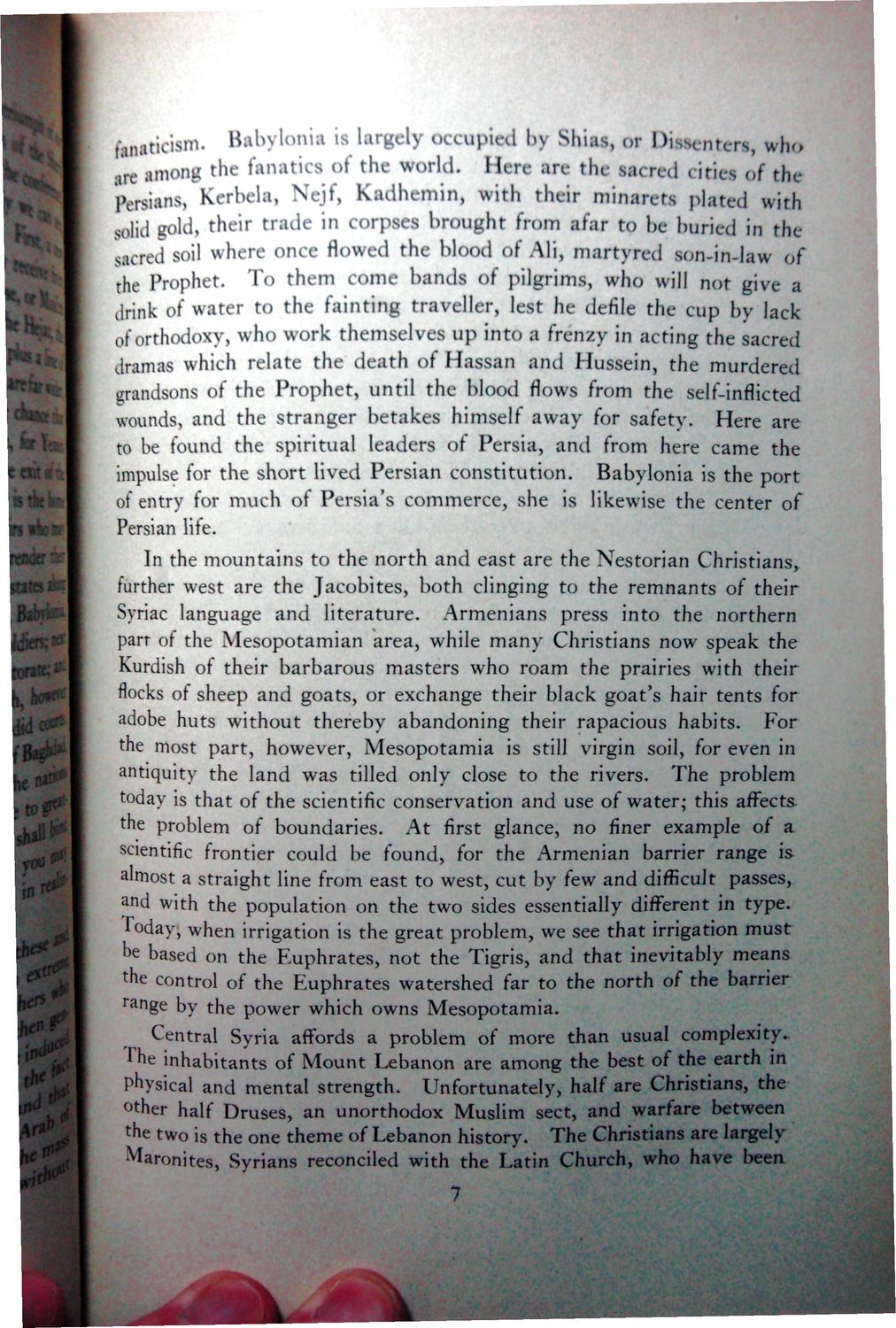| |
| |
Caption: War Publications - WWI Compilation 1923 - Article 19
This is a reduced-resolution page image for fast online browsing.

EXTRACTED TEXT FROM PAGE:
fanaticism. Babylonia is largely occupied by Mnas, or Dissenters, who among the fanatics of the world. J lere are the sacred dries of the Persians, Kerbela, Nejf, Kadhemin, with their minarets plated with solid gold, their trade in corpses brought from afar to be buried in the sacred soil where once flowed the blood of All, martyred son-in-law of the Prophet. T o them come bands of pilgrims, who will not give a drink of water to the fainting traveller, lest he defile the cup by lack of orthodoxy, who work themselves up into a frenzy in acting the sacred dramas which relate the death of Hassan and Hussein, the murdered grandsons of the Prophet, until the blood flows from the self-inflicted Here are Vfounds, and the stranger betakes himself away for safety. to be found the spiritual leaders of Persia, and from here came the impulse for the short lived Persian constitution. Babylonia is the port of entry for much of Persia's commerce, she is likewise the center of Persian lite. In the mountains to the north and east are the Nestorian Christians,, further west are the Jacobites, both clinging to the remnants of their Syriac language and literature. Armenians press into the northern parr of the Mesopotamian area, while many Christians now speak the Kurdish of their barbarous masters who roam the prairies with their flocks of sheep and goats, or exchange their black goat's hair tents for adobe huts without thereby abandoning their rapacious habits. For the most part, however, Mesopotamia is still virgin soil, for even in an tiquity the land was tilled only close to the rivers. The problem today is that of the scientific conservation and use of water; this affects the problem of boundaries. At first glance, no finer example of a scientific frontier could be found, for the Armenian barrier range is almost a straight line from east to west, cut by few and difficult passes, and with the population on the two sides essentially different in type. Today, when irrigation is the great problem, we see that irrigation must he based on the Euphrates, not the Tigris, and that inevitably means the control of the Euphrates watershed far to the north of the barrier range by the power which owns Mesopotamia. Central Syria affords a problem of more than usual complexity. The inhabitants of Mount Lebanon are among the best of the earth in physical and mental strength. Unfortunately, half are Christians, the other half Druses, an unorthodox Muslim sect, and warfare between the two is the one theme of Lebanon history. The Christians are largely Maronites, Syrians reconciled with the Latin Church, who have been 7
| |